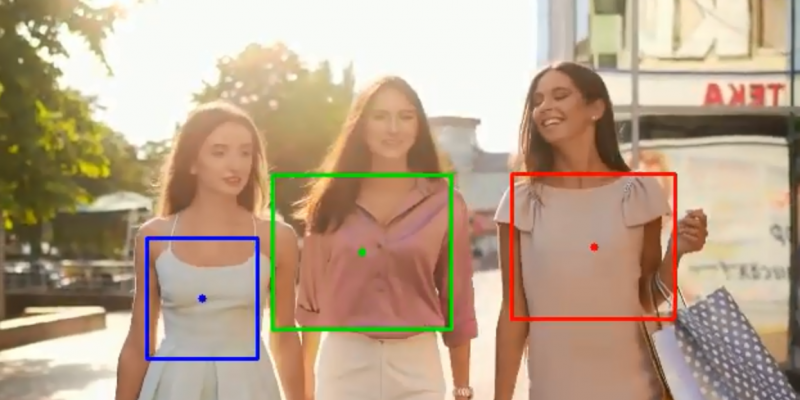MAY 14TH, 2019
We have been working on image recognition for almost ten years, for various clients and business cases.
There are many ways image recognition technology can be applied to drastically improve work efficiency.
In this article, we are going to introduce these examples.
Example 1: Object tracking
In this video, you could see how the blue, green and red squares on the clothes of three women move to match human movements.
As a result, a set of objects (clothes in this case) are being tracked using image recognition technology.
Θ Detecting product popularity and measuring effectiveness of marketing campaigns
How many videos are uploaded to the social media such as Twitter, Instagram, YouTube every day? It is impossible to measure exactly. I am sure that users upload a huge amount of data on a daily basis.
How to detect the popularity of a product in such a huge volume of data? By searching for a specific product using our image searching/matching tool, you can extract data and identify how popular the product is.
In addition, by placing an URL and product information on the objects, you also can check the product information or jump to the purchase page, just by clicking or pointing the cursor in the video.
Image recognition technology will be more useful in the future, because of a rising tendency to watch more videos, and it will be more and more popular with the arrival of 5G technology.
Example 2: Extracting information from the originally designed labels
QR codes and bar codes are a collection of numbers and points that cannot be recognized by the human eyes.
In addition, some people might think it is only a part of the product design that is not attractive at all.
Image recognition tool allows you to convert a specific product information to a QR-like originally designed code.
For example, you can easily see the product information by scanning this image.
Unlike QR codes, it makes a strong impact to consumers because it brings out the “originality” of the design.
It works by recognizing certain shapes and colors of the objects. This information is combined with object positions to encode the product code.
Please refer to “Introduction to image-matching principles” for more information.
Example 3: Image data management for publishing industry
We have successfully deployed our solution to a publishing company, to help them manage and utilize hundreds of thousand of data images.
The company used to spend a lot of time and resources doing manual checking to determine if a particular image has been used in their past articles. This helps checking the copyright issues with the images, and also helps retrieving related information from past articles to improve the contents of the new one.
Introducing our solution has helped the publishing company to reduce almost all human work, and dramatically increase checking time, thus shorten the time-to-market for their articles.

